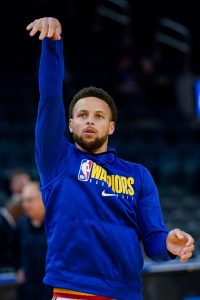Hoops Rumors is previewing the 2020 offseason for all 30 NBA teams. We’re looking at the key questions facing each club, as well as the roster decisions they’ll have to make this fall. Today, we’re focusing on the Chicago Bulls.
Salary Cap Outlook
Otto Porter Jr.‘s $28.5MM player option, which is a virtual lock to be exercised, should ensure that the Bulls remain over the cap during the 2020 offseason. Once that option is officially on the books, Chicago’s team salary will increase to $106MM in guaranteed money, even before accounting for cap holds for the team’s lottery pick and free agents.
The Bulls will also have the full mid-level exception (about $9.3MM) and the bi-annual exception ($3.6MM) available.
Our full salary cap preview for the Bulls can be found right here.
Roster Decisions To Watch
Options:
- Otto Porter Jr., player option: $28,489,239 (Oct. 17 deadline)
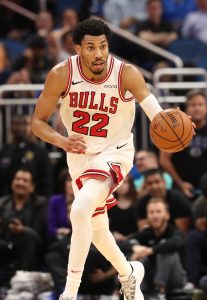
Non-Guaranteed Contracts:
Two-Way Contracts:
Free Agents:
2020 Draft Assets
First Round:
The Bulls moved up three spots as a result of the draft lottery, claiming the No. 4 overall pick despite entering lottery night with the seventh-best odds.
Second Round:
The Bulls traded away their own second-round pick (No. 37), but acquired the Grizzlies’ selection, which will be No. 44.
Three Key Offseason Questions
1. Who will be the Bulls’ next head coach?
After a tumultuous year-and-a-half at the helm, Jim Boylen was let go this summer by new Bulls front office executives Arturas Karnisovas and Marc Eversley. While it took a little longer than expected for the team to finalize that decision, it puts the new Bulls decision-makers in position to immediately place their stamp on the franchise with their own head coach, rather than making Boylen a lame duck for the next year.
Since Boylen’s ouster, names like Kenny Atkinson, Wes Unseld Jr., Darvin Ham, Stephen Silas, and David Vanterpool have been connected to the Chicago job. Even before a decision was made on Boylen, Ime Udoka and Adrian Griffin were rumored to be frontrunners for the position.
It’s a big, diverse group and it could get even bigger once the Bulls begin to formally interview candidates. However, most of the names have something in common — they’re experienced assistants without any head coaching experience themselves.
Atkinson is the one exception to the rule so far, but the former Nets head coach doesn’t represent a major deviation from the rest of the group. After all, he was brought in to help guide a rebuilding Brooklyn team. Once the club began making the transition from prioritizing player development to focusing on contending for a title, Atkinson was dismissed.
In replacing Boylen, the Bulls seem to be seeking an up-and-coming head coach who will focus on developing and connecting with the team’s young players, rather than a veteran who has experience dealing with stars and guiding playoff teams.
While that direction makes sense, it may increase the degree of difficulty for Karnisovas and Eversley, since their pick won’t necessarily have an extensive head coaching résumé to evaluate. It’s the duo’s first major decision and it will be important to get it right, so I expect the Bulls to take their time and do their homework on many candidates before finalizing a hire.
2. Which incumbent players are the new decision-makers most – and least – attached to?
The Bulls haven’t won more than 27 games in any of the last three seasons, but the roster that Karnisovas and Eversley are inheriting is hardly devoid of talent.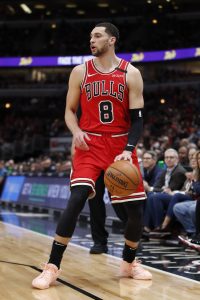
Zach LaVine has developed into one of the Eastern Conference’s top scorers (25.5 PPG in 2019/20). And in Lauri Markkanen, Wendell Carter, and Coby White, Chicago has the No. 7 overall picks from each of the last three drafts. Markkanen and Carter have been hampered by health issues and inconsistency, but all three of those players have shown promise since entering the NBA, and all three are 23 years old or younger.
Since taking the reins in Chicago, Karnisovas and Eversley have talked about placing a focus on development and looking to get the most out of the club’s young players — especially those who may have taken a step back last season. As such, it’s possible the team will stand relatively pat during this offseason and see what it can get out of those youngsters under a new head coach in 2020/21 before doing anything too drastic.
However, it’s also worth noting that the new decision-makers aren’t necessarily attached to any of those young, would-be cornerstones. This fall may not be the right time to move guys like Markkanen or Carter, since the Bulls would be selling low, but if the club gets an offer it likes for one of them or LaVine, it wouldn’t be a shock to see the front office pull the trigger.
Again, any major roster shake-up is probably unlikely until at least the 2021 deadline, but this will be a situation worth monitoring under the new regime.
3. Can the Bulls secure a long-term cornerstone with the No. 4 pick?
While it remains to be seen which of the Bulls’ returning players the new front office will commit to long-term, we can safely assume that the player the team drafts at No. 4 this fall will be given every opportunity to succeed over the next few years. It will be the first opportunity Karnisovas and Eversley have to acquire a potential future building block for the club, and – like the coaching hire – they’ll badly want to get it right.
With no prospects necessarily locked into the top three spots, we don’t know for sure which players will still be available at No. 4 for Chicago. But LaMelo Ball, Anthony Edwards, and James Wiseman have most frequently been cited as contenders for the No. 1 spot, so let’s assume for now that those are the first three players drafted in 2020.
In that scenario, the Bulls would be picking from a group that includes wings Deni Avdija, Isaac Okoro, and Devin Vassell, guards Tyrese Haliburton and Killian Hayes, power forward Obi Toppin, and center Onyeka Okongwu.
Although I don’t believe Chicago should – or will – be drafting based on need, the idea of selecting one of those wings is intriguing. Otto Porter Jr. likely isn’t the Bulls’ long-term solution at small forward, so if the team is high on a player like Avdija, Okoro, or Vassell, it would be a great match. Sam Vecenie of The Athletic notes that Okoro’s ability to guard wings would make him a nice complement to LaVine and White.
Still, the Bulls will certainly go in another direction if they feel there’s a prospect with more upside. In his most recent mock draft, for instance, ESPN’s Jonathan Givony has Chicago selecting Toppin, observing that the National Player of the Year could play alongside either Markkanen or Carter.
Information from Basketball Insiders and ESPN was used in the creation of this post. Photos courtesy of USA Today Sports Images.

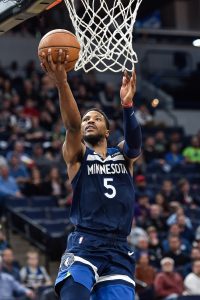


 Jordan Clarkson
Jordan Clarkson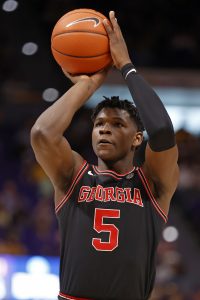 This year’s draft class doesn’t feature a consensus No. 1 pick like
This year’s draft class doesn’t feature a consensus No. 1 pick like 